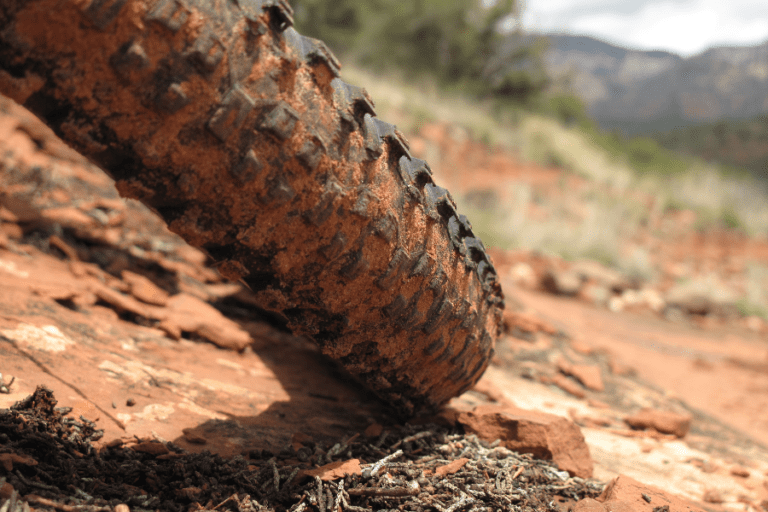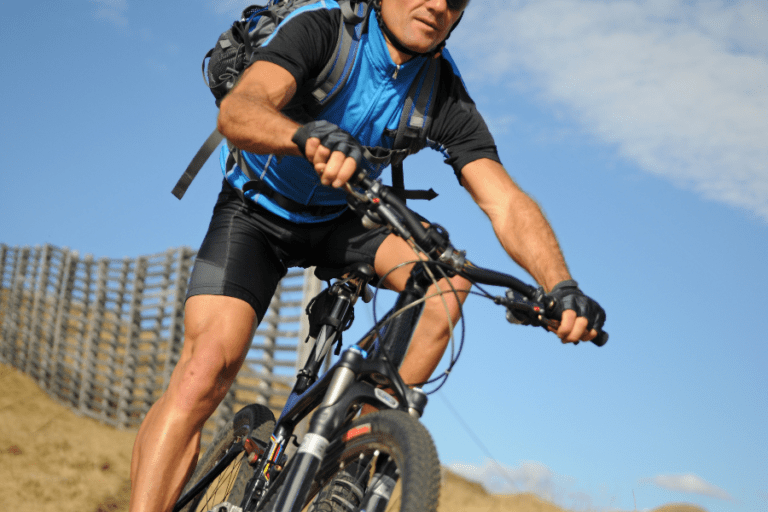How To Get Into Mountain Biking
Are you looking for an exciting way to explore the great outdoors and challenge yourself both physically and mentally? If so, mountain biking may be the perfect activity for you! But where do you start? Whether you’re a total beginner or an experienced rider looking to take your skills to the next level, we have something for you. So let’s get started on your journey to becoming a mountain biker!
How to Get Into Mountain Biking: A Complete Guide
Mountain biking is one exhilarating outdoor activity that provides room for nature exploration while you get a great workout. What does mountain biking involve? What do you need for it? Whether you’re new to cycling or an experienced road rider looking for a new challenge, this guide will help you start your mountain biking journey and show you everything you need about bike selection, essential gear, and mastering the trails.
Choosing the Right Mountain Bike
It’s crucial to choose the right mountain bike for your needs to ensure a smooth ride and enjoyable experience. Keep these factors in mind when picking out a mountain bike:
Determine Your Budget
Mountain bikes come in a wide range of prices, from affordable entry-level options to high-end professional models. Have a budget that does not break the bank. Try to keep your choices within scope. However, avoid cheap choices because you are still new to this outdoor sport.
Pick a Suitable Mountain Bike
There are four mountain bike types. Each fits a riding style and terrain. So, take a look at the following to understand the options you have and select one based on what you prefer:
- Cross-country: Lightweight and fast, these bikes are perfect for long rides on varied terrain.
- Trail: With a mix of versatility and balance, trail bikes work best when riding downhill or uphill.
- Enduro: Enduro bikes can handle steep and rough trails. They are built for challenging terrain and technical descents,
- Downhill: These bikes work best for high-speed descents and feature robust suspension systems.
Consider Bike Features and Components
Take into account the following features and components to ensure your mountain bike meets your needs and preferences:
Consider the frame material. Aluminum and carbon fiber are the most common frame materials, with aluminum being more affordable and carbon fiber offering lighter weight and increased stiffness.
Suspension is also essential. Choose between a hardtail (front suspension only) or a full suspension bike (front and rear suspension) for added comfort and control, depending on your riding style.
Factor in the wheel size. There are three main wheel sizes (26″, 27.5″, and 29″) that affect your bike’s handling and performance. It is easy for large wheels to climb over obstacles, but small wheels have an easier time maneuvering and accelerating.
Finally, consider the number of gears and the type of brakes (disc or hydraulic) that best suit your riding style and terrain preferences.
Essential Gear and Accessories
Before hitting the trails, ensure you have the necessary gear and accessories to stay safe and comfortable during your rides:
- Helmet: A well-fitted helmet is a must-have for protecting your head during falls and crashes.
- Gloves: Mountain biking gloves offer a better grip. Moreover, they protect your hands from blisters. They also cushion impacts.
- Mountain biking shoes: These specialized shoes provide excellent traction and power transfer on the pedals.
- Hydration gear: Take a water bottle with you when you go mountain biking. A hydration pack also works.
- Repair kit and tools: Carry a multi-tool, spare tube, pump, and tire levers to handle any on-trail repairs.
Learning Basic Mountain Biking Skills
Mastering a few essential mountain biking skills will help you ride with confidence and safety:
Proper Body Position
Adopting the correct body position for different situations will improve your balance and control. There are two positions your body can take while riding.
The first is the neutral position. Keep your body relaxed and centered over the bike when riding on flat or moderately inclined terrain.
The second is the ready position. Bend your elbows and knees, lower your center of gravity, and shift your weight slightly back when navigating technical sections or descending steep trails.
Braking Technique
Use front and rear brakes effectively to control your speed and maintain traction on various surfaces.
Shifting Gears
Master the art of shifting gears to maintain a comfortable cadence and conserve energy during climbs, descents, and flat sections.
Climbing and Descending
For climbing, shift your weight forward and maintain a steady pace. When descending, shift your weight back, lower your center of gravity, and keep your pedal level to maintain stability.
Cornering
Lean into turns and look ahead to where you want to go while applying even pressure on the outside pedal for better traction and control.
Locate Riding Buddies and Trails
Finding local trails and other mountain bikers makes the experience easier and better, especially because you are just starting. Use trail-finder apps and websites. You can find suitable trails near you by exploring apps like Trailforks or dedicated websites.
Moreover, you can join local mountain biking clubs or groups. Connect with other riders, learn from their experiences, and participate in group rides or events.
Attend mountain biking events and workshops to gain valuable insights and improve your skills. Stay up-to-date with the latest trends and techniques in the mountain biking community.
Frequently Asked Questions (FAQs)
Is mountain biking suitable for beginners?
Mountain biking is suitable for beginners as long as you start with easy trails and gradually progress to more challenging terrain as your skills improve.
What is the cost range of a good mountain bike?
A good entry-level mountain bike can cost between $500 and $1,000, while mid-range and high-end models can range from $1,000 to $5,000 or more.
Are there different types of mountain biking?
The main types of mountain biking include cross-country, trail, enduro, and downhill, each with varying difficulties and specialized bikes designed for specific terrains.
Can I start mountain biking without any prior experience?
You can start mountain biking without prior experience. Check out trails and use the easy ones; learn the basics of outdoor activity, and take it one step at a time.
Are there ways to make my mountain biking skills better?
To improve your mountain biking skills, practice regularly, seek advice from experienced riders, join local clubs or groups, and attend workshops or events.
Adventure Awaits!
Mountain biking is rewarding and exciting because of the adventure it offers. By choosing the right bike, acquiring essential gear, mastering basic skills, and connecting with fellow riders, you’ll be well on your way to conquering the trails. Remember to prioritize safety, respect the environment, and, most importantly, enjoy the ride.






